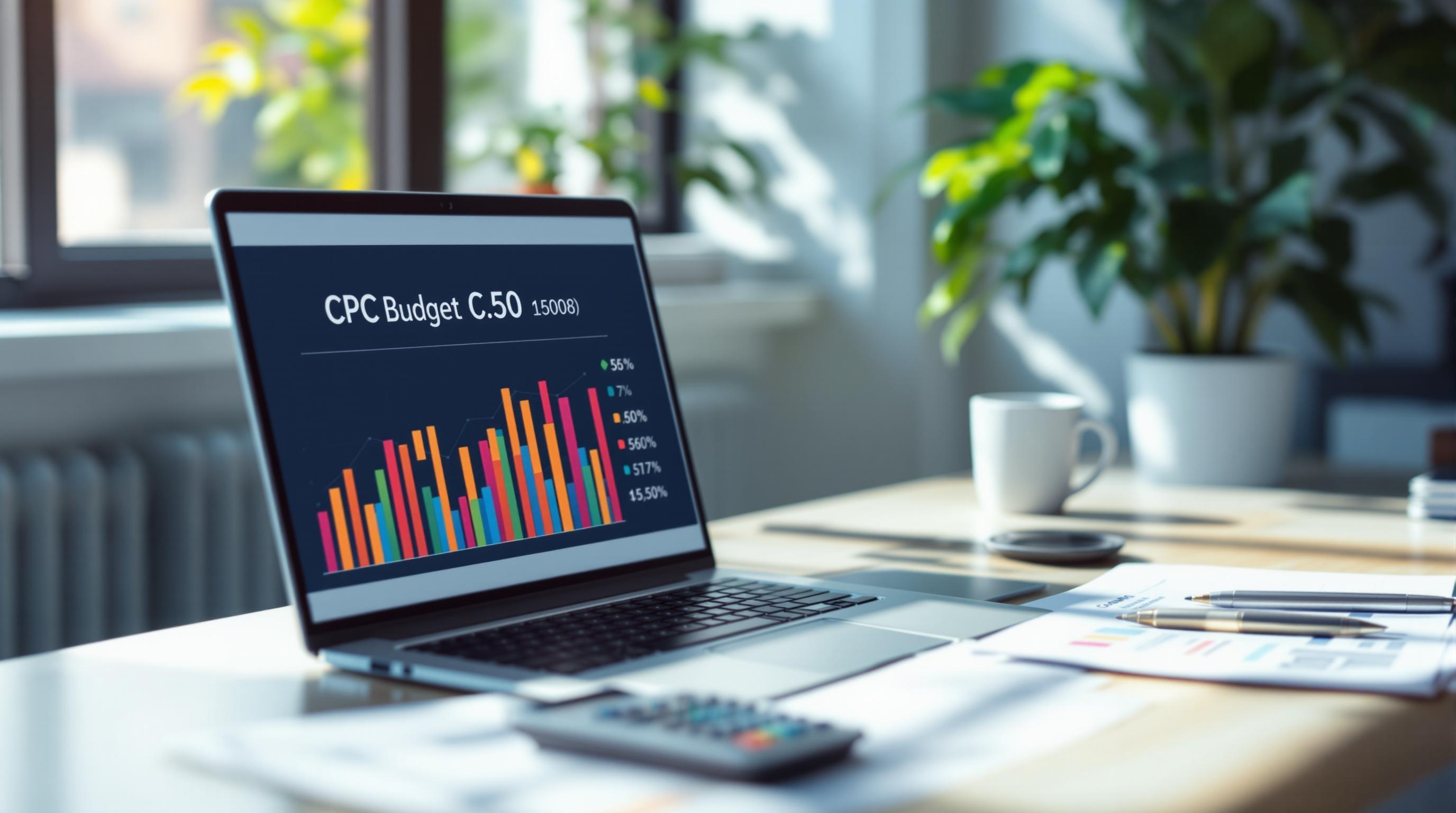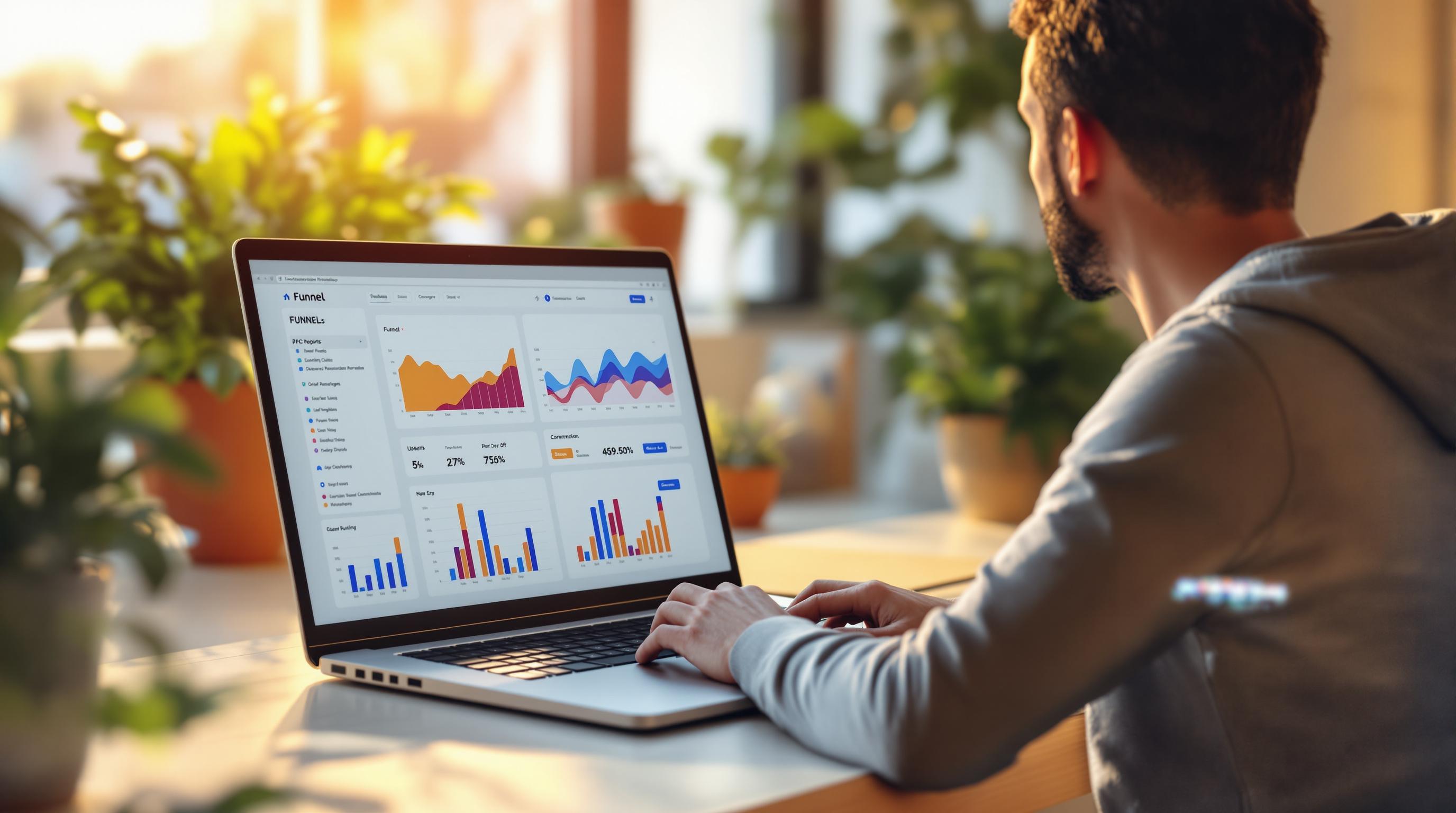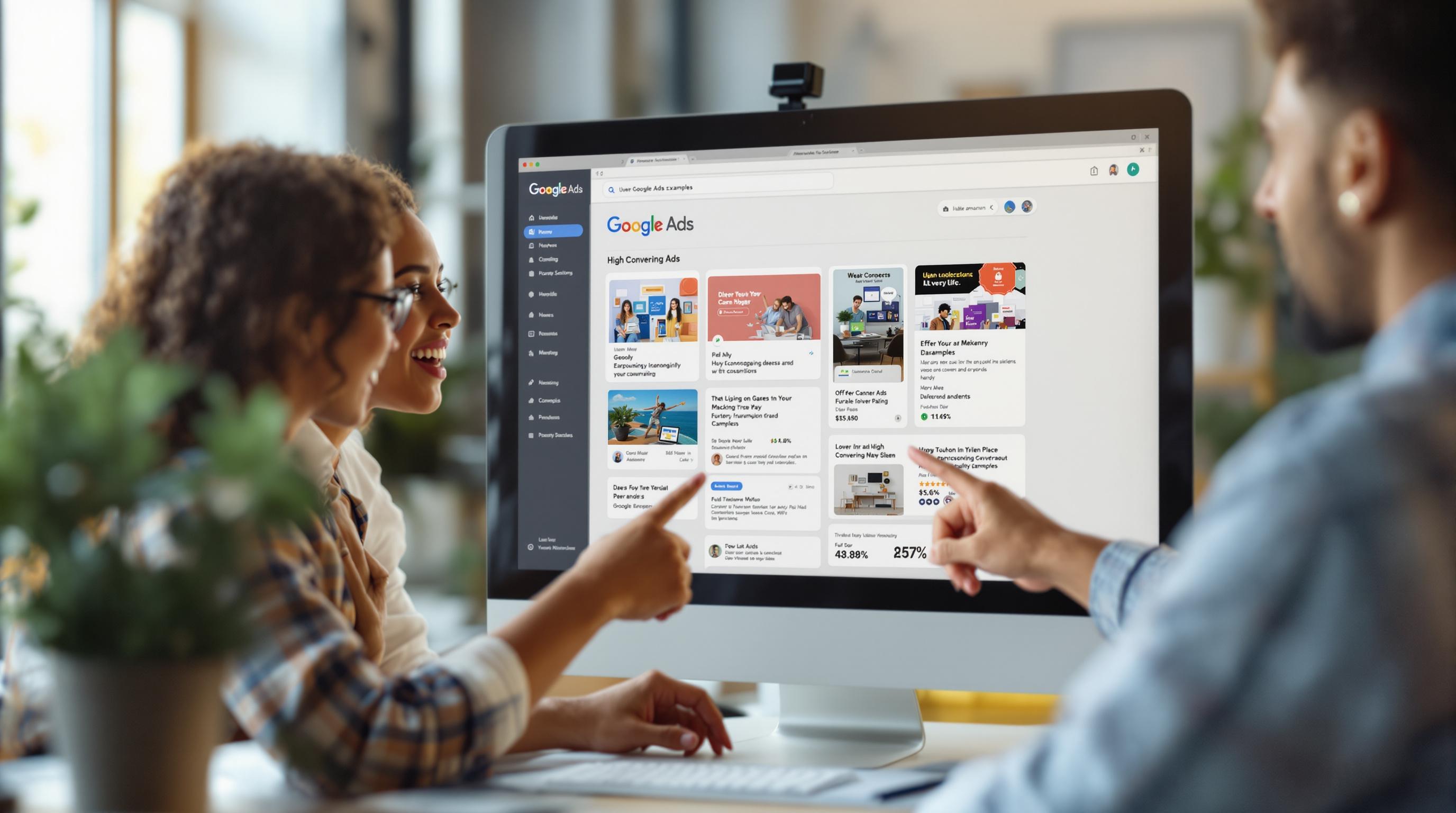Choosing between Google Ads and Microsoft Advertising depends on your goals. Here's the key difference: Google Ads offers massive reach and advanced targeting for consumer-focused campaigns, while Microsoft Advertising excels in B2B marketing with its LinkedIn integration and lower costs.
Key Points:
-
Google Ads:
- Largest search market share (92%).
- Higher CPC ($2.69 average).
- Best for e-commerce and global reach.
- Advanced targeting and ad formats (e.g., YouTube ads).
-
Microsoft Advertising:
- Smaller audience but focused (Bing, MSN, Outlook users).
- Lower CPC ($1.54 average).
- Unique LinkedIn targeting for job titles, industries, and companies.
- Ideal for B2B and professional services.
Quick Comparison Table:
| Feature | Google Ads | Microsoft Advertising |
|---|---|---|
| Market Share | 92% global reach | Smaller, focused audience |
| Cost per Click (CPC) | Higher ($2.69 average) | Lower ($1.54 average) |
| Best Use Case | Consumer and global reach | B2B and professional targeting |
| Unique Feature | YouTube and advanced targeting | LinkedIn integration |
Bottom Line: Use Google Ads for wide consumer reach and Microsoft Advertising for precise B2B targeting.
Overview of Google Ads and Microsoft Advertising

Google Ads: A Leader in Online Advertising
Google Ads dominates the digital advertising world with the biggest slice of global search traffic. The platform packs a punch with its range of options - from basic text ads to eye-catching video campaigns, shopping ads, and app promotions. Their latest AI tool, Performance Max, takes the guesswork out of campaign management by automatically tweaking bids and ad placements to get you better results.
Think of Google Ads as the Swiss Army knife of digital advertising - it's got a tool for every job.
Microsoft Advertising: A Growing Alternative
Microsoft Advertising might be smaller, but it's found its sweet spot, especially in B2B marketing. What makes it special? Its LinkedIn connection. This integration lets you zero in on exactly who you want to reach - down to their industry, job title, and where they work.
"The integration of LinkedIn targeting capabilities within Microsoft Advertising has transformed B2B marketing strategies, offering unprecedented access to professional audiences while maintaining lower CPCs than traditional platforms", notes Microsoft Advertising's documentation.
They've added some cool tech too - ChatGPT and Copilot help you whip up and fine-tune campaigns faster than ever. If you're selling luxury items, financial products, or B2B solutions, Microsoft Advertising's well-heeled, professional audience might be just what you need.
While Google Ads is still the heavyweight champ with its massive reach, Microsoft Advertising shines when it comes to targeting specific professional audiences and keeping costs down.
Feature Comparison: Google Ads vs Microsoft Advertising
Audience Reach and Market Share
Google Ads rules the search advertising world with over 90% of global search market share. They're everywhere - all languages, all countries, all devices. Microsoft Advertising takes a different approach, focusing on the Microsoft Audience Network that includes Bing, MSN, and Outlook.com users.
Here's what makes Microsoft's audience special: they tend to be higher-income professionals. If you're targeting business decision-makers or specific industry segments, Microsoft's network might be your sweet spot.
Targeting Features
Both platforms pack a punch with their targeting tools, but they shine in different ways. Google Ads gives you precise control over who sees your ads - from basic demographics to detailed audience segments. Their automated tools make it easier to manage campaigns and optimize bidding.
Microsoft's secret weapon? LinkedIn integration. This means you can target people based on their actual job titles, companies, and industries - pure gold for B2B marketing.
| Targeting Feature | Google Ads | Microsoft Advertising |
|---|---|---|
| Demographic | Advanced age, gender, parental status | Basic demographic + LinkedIn professional data |
| Geographic | Global coverage with precise location targeting | Strong in North America and Europe |
| Professional | Limited professional targeting | LinkedIn integration with job function and industry targeting |
| Behavioral | Extensive interest and habit-based targeting | Microsoft Audience Network behavioral data |
Bidding Systems and Costs
Let's talk money: Microsoft Advertising is typically easier on your wallet, with an average cost per click of $1.54. Google Ads comes in higher at $2.69 per click, mainly because more advertisers compete for the same spots.
Think of Microsoft as the budget-friendly testing ground for your campaigns. But don't write off Google's higher prices - they often deliver better conversion rates thanks to their massive audience and smart targeting systems.
The story doesn't end with just costs though - each platform offers different ad formats and ways to track how well your campaigns perform.
Ad Types and Tracking Tools
Ad Formats and Options
Google Ads stands out with its mix of options and smart features. Their responsive search ads test different combinations automatically, while access to YouTube's network opens up huge video advertising possibilities. For online stores, Google's remarketing system shows past visitors the exact products they looked at before - a neat trick that helps turn browsers into buyers.
| Ad Format | Google Ads | Microsoft Advertising |
|---|---|---|
| Text Ads | Auto-testing multiple versions | Basic text format |
| Video Ads | Full YouTube access | Limited video options |
| Shopping Ads | Rich product features | Basic product listings |
| Display Ads | Smart remarketing, interactive ads | Standard display + LinkedIn |
After launching your ads, keeping tabs on how they're doing becomes key to making them work better.
Performance Tracking Tools
Google Ads and Google Analytics work together like a dream team. When you connect them, you can follow your customers' entire journey - from their first click on your ad all the way to making a purchase. You'll see exactly how your campaigns perform and which paths lead to sales.
Microsoft's Universal Event Tracking (UET) keeps things focused on what matters most: click rates, how many people convert, and what you're paying per click. It's straightforward but effective, perfect for businesses who want clear numbers without getting lost in too many details.
"Google Analytics integration allows for comprehensive insights into campaign performance and user behavior, making it the go-to choice for detailed performance tracking", notes Google's documentation, highlighting the platform's analytical strength.
Both platforms give you solid tools to track conversions and understand your audience. Google offers more bells and whistles for those who want to dig deep into the numbers, while Microsoft keeps it simple with a focus on the stats that impact your bottom line.
sbb-itb-89b8f36
When to Use Google Ads or Microsoft Advertising
Google Ads: Best for Large Audiences
Google Ads dominates the digital advertising space, making it perfect for businesses looking to reach the widest possible audience. It's the go-to platform if you want to connect with consumers at scale, thanks to its powerful targeting tools and diverse ad formats.
The platform shines for e-commerce and consumer brands, offering everything from search ads to YouTube campaigns. Google's AI helps squeeze the most out of your budget by automatically fine-tuning campaigns across its massive network.
"Tapping the huge traffic volumes offered by Google Ads can't be compared with Microsoft Ads distribution networks. More traffic combined with Google targeting options generates lower cost per conversion", explains Adam Ostapinski from UnAgency.
Microsoft Advertising: Best for Specific Niches
Microsoft Advertising has carved out its own space, especially in B2B marketing, thanks to its LinkedIn partnership. Want to target CFOs at tech companies? Microsoft's your platform. You can zero in on specific job titles, industries, and companies - perfect for reaching the people who make buying decisions.
| Campaign Type | Best Platform |
|---|---|
| Global Consumer Reach | Google Ads |
| B2B Marketing | Microsoft Advertising |
| Professional Services | Microsoft Advertising |
| E-commerce | Google Ads |
"Microsoft Ads allows advertisers to target users based on job function, industry, and organization, exploiting the professional context provided by LinkedIn data. This is especially useful for B2B marketing tactics because it provides a more focused way to reach business professionals", notes Jeremy Mauboussin of Plagia Shield.
The platform works particularly well with audiences who tend to be older and have higher incomes. If you're selling professional services or B2B solutions, you might get better results here than with broader platforms.
Here's the bottom line: Pick Google Ads when you need massive reach and consumer focus. Go with Microsoft Advertising when you're after specific professional audiences and B2B opportunities.
Related video from YouTube
Conclusion: Choosing the Right Platform
Let's break down what makes each platform tick - and help you pick the right one for your needs.
| Platform Strengths | Google Ads | Microsoft Advertising |
|---|---|---|
| Market Position | Dominates with 90%+ market share | Smaller but focused audience |
| Cost | Higher CPCs due to competition | Lower CPCs, better deals |
| Best For | Mass market, consumer products | B2B and professional markets |
| Special Feature | Deep demographic targeting | LinkedIn Profile data |
Here's the deal: Google Ads is the heavyweight champ, controlling over 90% of global searches. It's like fishing in the ocean - lots of fish, but also lots of other boats around. Microsoft Advertising? Think of it as a private lake - smaller, but sometimes the fishing's better.
What the experts say:
"Google Ads offers more traffic and targeting options, leading to lower cost per conversion", notes Adam Ostapinski from UnAgency.
"Microsoft Advertising's integration with LinkedIn for refining target audiences creates more targeted campaigns", explains Hannah Lydford of Headley Media.
Google Ads might be your best bet if you:
- Need to reach the widest possible audience
- Have consumer-focused products
- Want the most detailed targeting options
Microsoft Advertising shines when you:
- Focus on B2B marketing
- Want to tap into LinkedIn's professional network
- Look for lower costs per click
Plus, Microsoft's recent AI tools (ChatGPT and Copilot) make campaign management easier than ever. They're not just keeping up with Google - they're bringing something new to the table.
Think of it this way: Google Ads is like New York City (busy, competitive, but full of opportunities), while Microsoft Advertising is more like a thriving suburban business district (fewer people, but often easier to connect with exactly who you want).
FAQs
Which is better, Microsoft ads or Google Ads?
It's not about which platform is "better" - it's about what fits your needs. Let's break down the key differences:
Google Ads packs a punch with a 3.75% conversion rate, but you'll pay more ($2.69 per click). Microsoft Advertising costs less ($1.54 per click) and shines in B2B marketing thanks to its LinkedIn connection.
Here's how they stack up:
| Aspect | Google Ads | Microsoft Advertising |
|---|---|---|
| Best Use Case | Mass market reach | B2B & professional targeting |
| Unique Strength | Advanced targeting options | LinkedIn integration |
"Microsoft Ads allows advertisers to target users based on job function, industry, and organization, exploiting the professional context provided by LinkedIn data", explains Jeremy Mauboussin from Plagia Shield.
Here's the deal: Most companies get the best results by using both platforms. If you're new to PPC, start with Google Ads - it's got the reach and data you need to learn the ropes. Once you're comfortable, add Microsoft Advertising to tap into its B2B strengths.
What makes Microsoft Advertising stand out? Its LinkedIn integration lets you zero in on decision-makers with scary accuracy. But don't write off Google Ads - its massive reach and smart tools make it perfect for casting a wider net.
The bottom line? Pick the platform (or both) that matches your goals and target audience.


